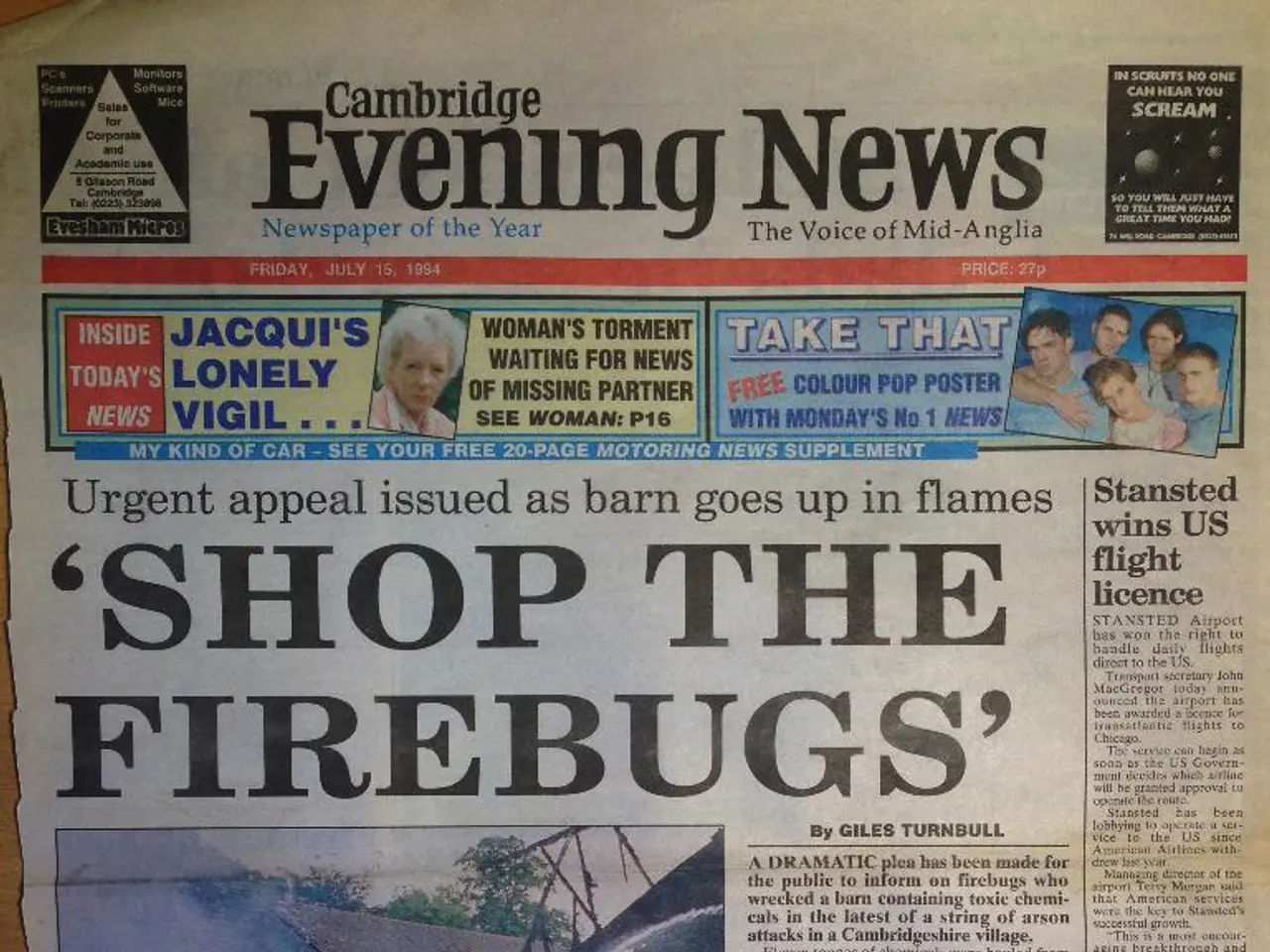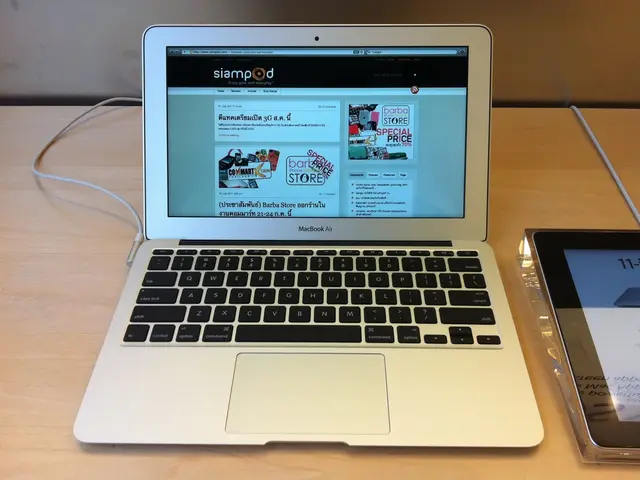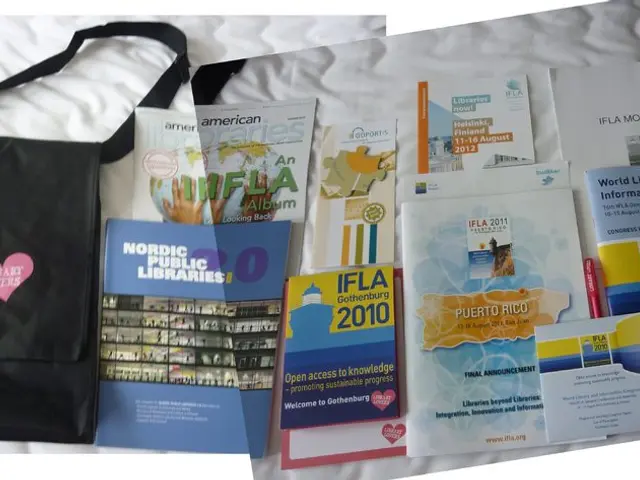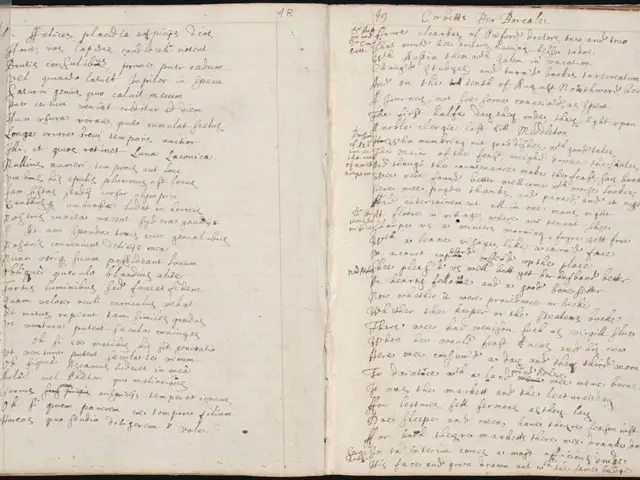Identifying Deceitful Data in the Digital Realm
In the digital age, sifting through the vast amount of information available online can be a daunting task. With social media platforms contributing to the rapid spread of misinformation and disinformation, it is essential to identify and verify credible sources of information.
Fortunately, there are several strategies to help us navigate this information landscape. One such strategy is the SIFT method, which involves stopping to consider the source, performing lateral reading to check the source's reputation, finding better coverage to confirm or dispute claims, and tracing claims back to their original context.
Another useful tool is the ABCD framework, which focuses on checking the authority of the author, assessing any potential bias, verifying the currency of the information, and looking for documentation to support the claims. The CRAAP Test and P.R.O.V.E.N. Evaluation are other methods that help in evaluating the credibility of online sources.
Lateral reading, hovering, fact-checking websites, and tracing original sources are additional techniques that can be employed to verify the accuracy of information. Recognising and accounting for bias is also crucial, as all sources can have inherent biases that may influence the presentation of facts.
In New Zealand, robust science information can be found on several government-based websites and organizations such as the Science Media Centre, Royal Society Te Apārangi, The Conversation, RNZ, Office of the Prime Minister's Chief Science Advisor, Department of Conservation, Ministry for Primary Industries, Ministry for the Environment, Stats NZ, Crown research institutes like NIWA, Manaaki Whenua - Landcare Research, AgResearch, and Plant & Food Research.
Younger demographics, who often use social media platforms like TikTok as a news source and search engine, must develop skills to check the accuracy of social media posts. Images, infographics, and graphs can be used to create a false narrative or misrepresent information, so it is important to look at these representations carefully and ensure they follow standard conventions and use the correct style of graph for the data or information.
The article "Climate change, science, and controversy" looks at fake facts from Galileo to the present, while "Misinformation, disinformation and bad science" provides additional information and learning around countering false information online. The Connected article "Fake facts" defines misinformation, malinformation, and disinformation and provides examples of each.
The height of the COVID-19 pandemic saw social media play a significant role in promoting inaccurate information, with 29% of frequent social media users in America being misinformed on at least one aspect of the virus and 26% believing that COVID-19 would likely die off in the spring. Information can be distorted unintentionally or on purpose, and learning about common logical fallacies can help in identifying misinformation and disinformation.
False information is not a new phenomenon, dating back to at least the 1890s as illustrated by a cartoon from 1894. The article "Fraudulent study: MMR vaccine controversy" discusses a real-life example of an unethical and later retracted scientific paper and its ongoing ramifications for accurate information on vaccinations.
In conclusion, to ensure credibility, always verify the author's expertise, check for supporting evidence and citations, confirm the information is current, look for multiple independent confirmations, and be wary of biased or poorly documented content. Using combined methods like SIFT, ABCD, and lateral reading, alongside trusted fact-checking tools, creates a robust approach to identifying and verifying credible online information sources.
Online education platforms offer opportunities for education-and-self-development, especially in the realm of learning how to discern credible sources amid the deluge of online information. For instance, one can use the ABCD framework to evaluate the authority, bias, currency, and documentation of sources, ultimately elevating one's online-education in identifying reliable content.
Embracing lifelong learning, younger demographics can harness these self-development strategies to counter misinformation on social media platforms, where false narratives, misrepresentations, and logical fallacies are pervasive. Thus, they can cultivate their education-and-self-development skills to promote a more informed and critical online community.







